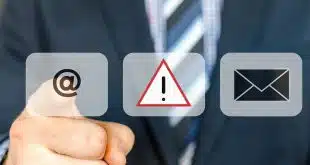(This is the first part of a two-part column. Part Two will appear next month.)
From the Office of the Comptroller of the Currency to the laboratories of Silicon Valley, innovation is the most important thing happening in payments today. We are re-inventing not only the technology of payments but also the methods and rules—and in some cases, the ownership of the country’s and the world’s payments systems.
Innovation in payments has been going on for a long time. The first “checks” came about when traveling merchants would deposit gold or currency with a bank in the city from which they were departing, carry the deposit receipt with them, and sign over the receipt to a bank in the destination city in return for the equivalent in that country’s currency.
This two-part series presents a proven, practical, and uncomplex model for conducting innovation that has been used at SRI International, IBM’s Watson Research Center, and PwC, and in working with clients ranging from central banks to commercial banks, card companies, retailers, and fintech startups.
Graphically-Facilitated Group Innovation™
- The Right Group Beats A Lone Genius
Popular books on innovation usually tell the stories of lone genius innovators, from James Watt to Elon Musk, ignoring the reality that as much or more innovation is done by groups as by individuals. For us who aren’t geniuses, the group approach can create innovation just as successfully. But you’ll need the right group of people in the room. Two people from each of four disciplines should be brought together:
– Marketing people who know the customers well;
– Experienced use-case developers;
– Technologists and engineers;
– Customer-interface designers.
Large innovation groups can be effective if broken up into sub-groups made up of people from each of these categories, with each group at a table and all of them in one room. Two more things are key for successful sessions: Have the workroom walls covered in drawing paper and involve a good facilitator to guide the process.
- Start With the Problem—Then Work Backwards
Start by putting the problem or opportunity statement on the wall. Then, instead of trying to solve it, work backwards to what causes it. Here are some recent examples:
– Most banks find producing customer statements a burden. What about giving each customer a bot that would receive a feed of all transactions to and from the customer’s account as they are made, with the statement getting assembled on the customer’s computer rather than the bank’s, and in real time?
– Sometimes the solution is so simple it is hard to see. The startup that invented high-speed check imaging was trying to figure out how to keep the checks that were going through the machines from becoming airborne. One of the engineers went over to the machine and turned the speed down just enough. Problem solved.
– How could we avoid being impacted by fraud? Maybe payment-fraud risk could be shifted to other parties if the risk could be calculated and made into a marketable option instrument. Instead of solving the problem, sell it to someone else.
Before trying to correct the problem, try innovating how to not have the problem.
- Graphics And Groups
Innovation is unlikely to happen if people just sit and talk.
Instead of talking, innovation groups can use large-format drawings made with colored markers on paper that covers the walls. The reason for drawing on a wall, not an easel pad, is that the people watching have to move their heads to follow along.
The combination of silence and movement almost magically lowers the unproductive talk among the group members. And it does the same for the mental self-chatter in our heads. Into this space truly novel ideas will often bubble up from people’s subconscious minds. Have them share these by drawing them on the walls, which can engender further ideas.
Next month: It Is All in Your Mind; Modeling The Innovations; Evaluating the Models.
—George Warfel • GWarfel@haddonhillgroup.com





